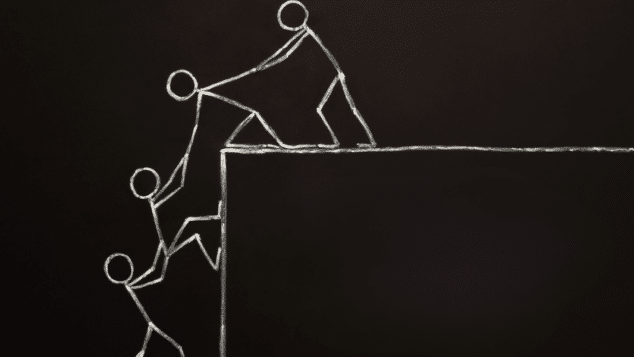4 Ways Associations Can Address Burnout

Burnout was bad enough pre-pandemic — and COVID-19, plus other recent stressors, have only made matters worse.
Seven out of 10 workers say last year was the most stressful of their lives, and 78% say the COVID-19 pandemic negatively affected their mental health, according to a global survey of more than 12,000 workers conducted by Oracle and Workplace Intelligence. “Mental health has become one of the biggest challenges for employees and employers to manage with the continuously evolving work dynamic,” the Oracle report noted. “Organizations are realizing that they must address all aspects of employee health, including stress and anxiety, in order to avoid a decline in productivity and prevent work burnout.”
Preventing such burnout should be a top priority: A December study from benefits provider Spring Health found 76% of U.S. workers were experiencing burnout.
And, to be clear, burnout is much more than a bad case of the blahs. The World Health Organization (WHO) defined burnout in 2019 as an occupational syndrome that results from “chronic workplace stress that has not been successfully managed.” According to the WHO, burnout involves:
- feelings of energy depletion or exhaustion;
- increased mental distance from one’s job, or feelings of negativism or cynicism about one’s job; and
- reduced professional efficacy.
“Burnout is that intersection between exhaustion and cynicism,” says April Ervin, founder and chief peace officer of Sustainable Leadership LLC, a well-being consulting firm, and a leadership, burnout and resilience consultant based in Indianapolis. “It’s prolonged stress. It’s that point of emotional and physical depletion where you’re not able to be as productive as you normally would be.”
In addition to the pandemic, racial injustice, social protests and the sudden shift to remote and virtual work all formed “an onslaught of things taxing individuals,” Ervin says.
“Fear, uncertainty, loneliness, isolation, disruption — people feel like life is out of control,” Darcy Gruttadaro, director of the Center for Workplace Mental Health at the American Psychiatric Association Foundation in Washington, D.C., told SHRM’s All Things Work earlier this year.
While some stress is unavoidable, there are certain steps organizations can take today to help lighten the load, including adding more time off to the company calendar, arranging company retreats, having association executives lead by example and ensuring that employees are supported in pursuing mental health resources.
Action Plan
To help mitigate the burnout crisis, some organizations have provided paid, collective time off. In April, LinkedIn gave its 15,900 full-time employees a paid week off to help combat burnout. Other companies, such as Cisco, SAP and Thomson Reuters, have instituted mental health days as company holidays. Unlike individual vacations, company-wide time off ensures that workers don’t get bombarded by emails and requests that accumulate in their absence.
However, it will take more than a few company vacation days to address what Ervin calls “a global burnout epidemic that’s only been pushed further by the COVID-19 pandemic.”
Organizations first must self-assess, Ervin recommends. They need to survey employees annually on how they’re experiencing their work. That should shed light on the company culture. It might reveal, for instance, an unpleasant reality that “many cultures thrive on burnout,” Ervin says. At these organizations, “burnout is worn as a badge of honor.”
Employers also should set aside dedicated time for association-wide retreats, if not quarterly then at least semiannually, for all employees “to get to know each other as human beings first,” Ervin says. “You step away from the work of every single day, take a breath and have individuals come together.”
At these company retreats, workers should speak candidly about how they’re doing — mentally, emotionally and physically. “I call it a temperature check,” Ervin says. In fact, she finds it helpful for workers to describe how they’re faring in terms of the weather. For example, one person might say he’s 80 degrees and sunny; another might say she’s 40 degrees and rainy. It’s a quick, effective way to gauge a worker’s current state.
These gatherings should serve as safe spaces — without the fear of repercussions if people talk about feeling overworked, for instance. “We have to take the fear away,” Ervin says.
Leading by Example
Almost three-quarters (74%) of employers and employees predict employee well-being will have the greatest impact on the workplace of the future, according to a MetLife survey. That’s followed closely by the ability for employees to work remotely (71%) and employee mental health, stress and burnout (70%).
So it stands to reason that association leaders should take these issues seriously. Additionally, for employee openness and vulnerability to happen, leaders first have to model it, Ervin says. Leaders must talk on a personal level about burnout and how it affects them. In addition to company-wide conversations, company leaders and HR managers must infuse emotional intelligence into their one-on-one conversations with employees.
Among many strategies to help employees cope, Gruttadaro told All Things Work, some employers are regularly asking employees about their well-being, as well as teaching managers to spot troubled workers and start conversations to offer help.
When it comes to time off, it’s crucial not just to give people paid leave but to require them to take it — and not penalize them when they do. Here again, leadership matters. “Teams mimic their leaders,” Ervin says. When leaders take their vacation days, their teams feel they can, too.
The same acceptance should apply to mental health benefits. It’s great to offer the benefit of counseling, for instance. However, “the taboo has to be taken off it,” she says. That’s especially urgent in light of the strong need for such support: 26% of workers say they sought help for burnout, stress or other mental health issues last year, and 48% of employees who sought help used an employer resource, up from 43% in July 2020, according to the MetLife survey.
Some employers have increased the number of free counseling sessions offered, waived copayments for therapy or provided free access to mindfulness and meditation training, according to Gruttadaro.
As more companies return to the office, they shouldn’t forget one of the key lessons of the pandemic, Ervin says: The flexibility of remote work, or a hybrid of remote and in-office work, can lead to a happier, healthier employee.
Associations need to pay special attention to the challenge of limited resources, Ervin advises. They should keep that limitation in mind when setting demands and expectations. “There’s only so much human capital to work with, so don’t push beyond people’s limits,” she says. “Burnout happens when we constantly push beyond our limits.”
Tags
Related Articles
The Champion’s Mindset: What Elite Athletes Can Teach Us About Mental Toughness and Success
An interview with Dr. Wendy Borlabi, sport psychologist and closing keynote speaker for Women’s Executive...
Great Bosses, Greater Impact: Leadership Lessons that Stick
The best bosses leave more than instructions—they leave echoes of confidence, creativity, and leadership that...
Rewirement: A New Approach to Retirement
Retirement doesn’t have to mean stepping away—it can be a thrilling "rewirement" into a purpose-driven,...




